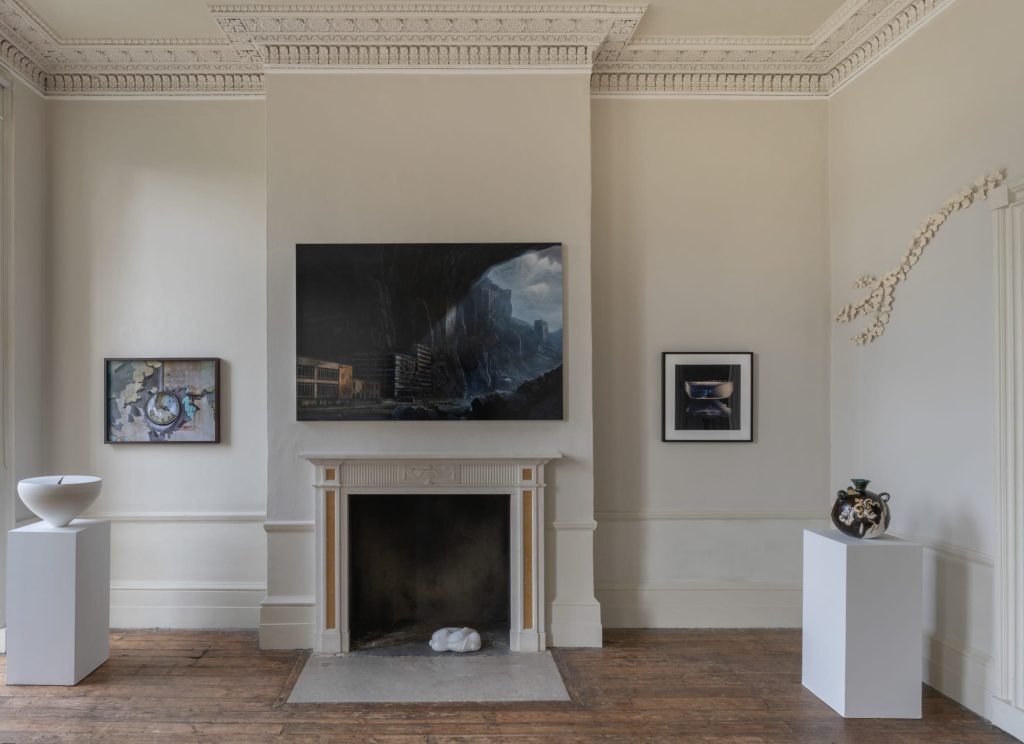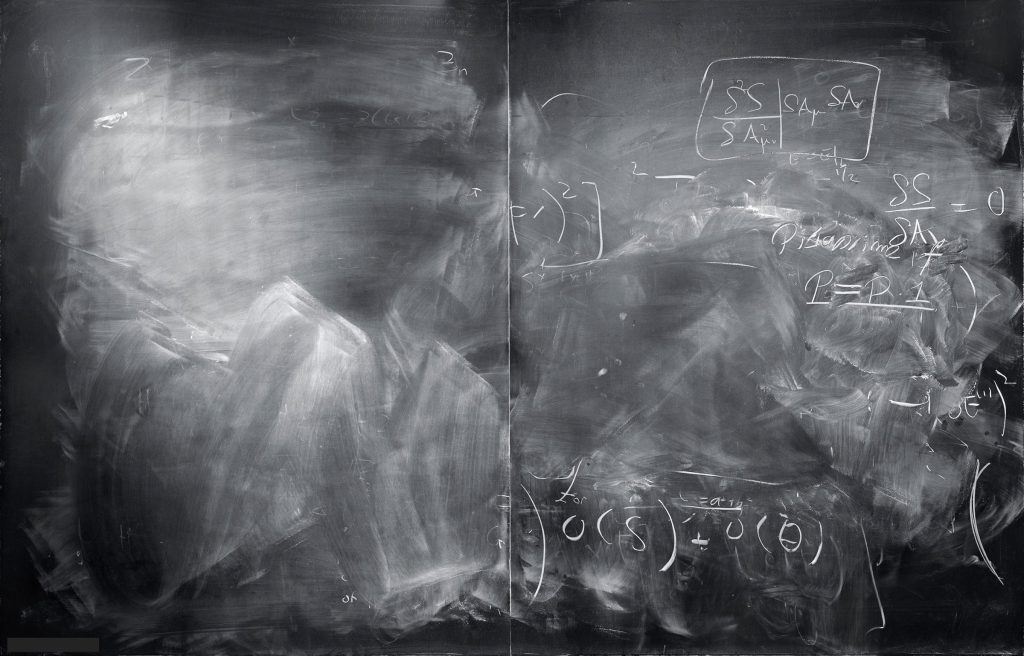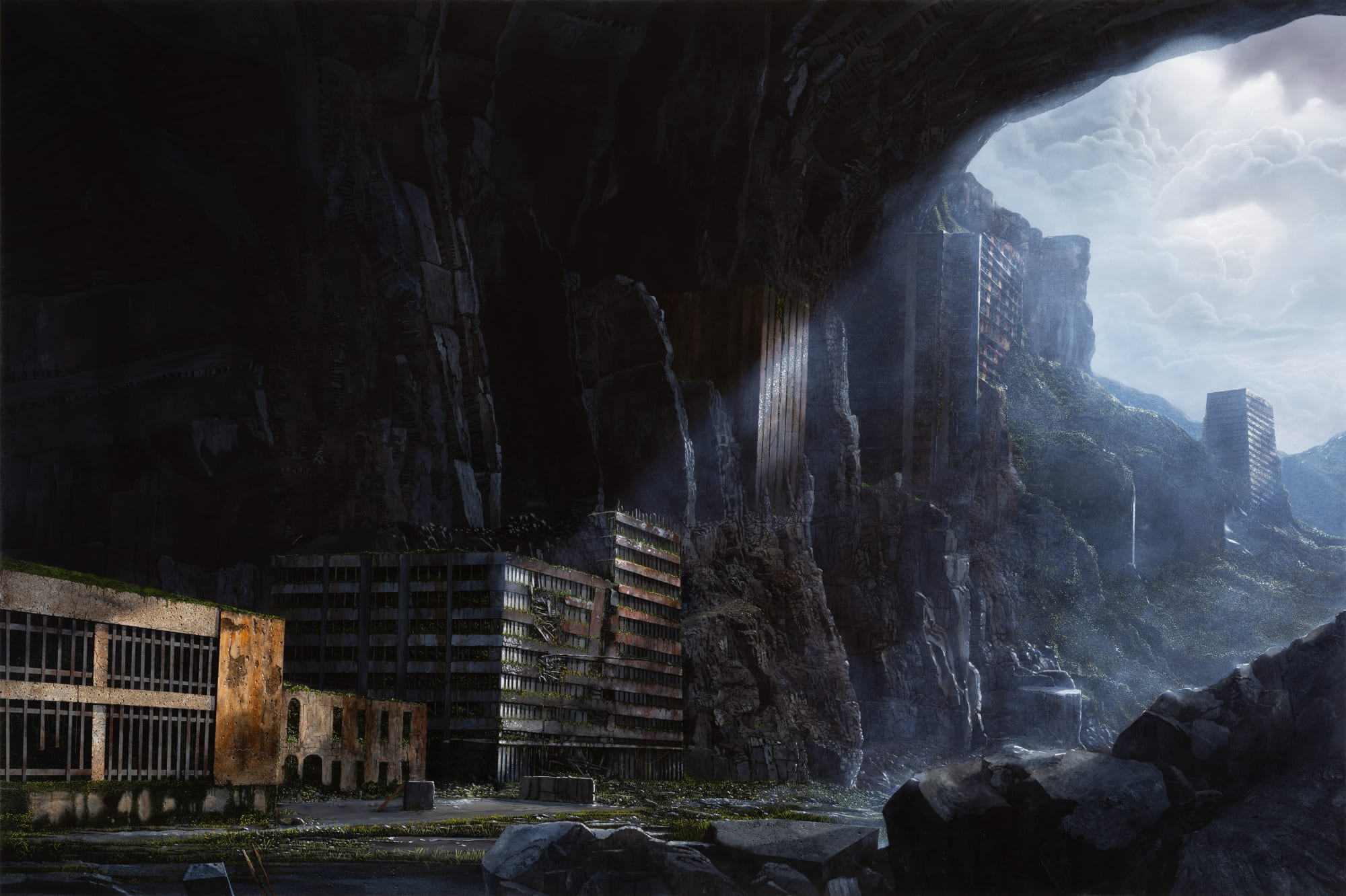Apocalypse Now
25th January – 1st March, 2024
TRISTAN HOARE
6 Fitzroy Square
London W1T 5DX
Tristan Hoare is delighted to present our first exhibition of 2024, Apocalypse Now. Europe is in deep winter with short days and darkness around, so it seems the right time! Connecting with this, there is a growing global malaise as we face unprecedented challenges in an atmosphere of disharmony. Where will it lead? The word ‘apocalypse’ is derived from the Greek ‘ἀποκάλυψις,’ meaning to reveal, and comes from John’s Book of Revelation which prophesies the end of the world. This vision of a dark fate for humanity is present in many cultures who have their own version of natural and cosmic disasters.

© TRISTAN HOARE
In the Aztec myth of the sun, the earth is destroyed 4 times! Throughout history, artists, writers and poets, have depicted, feared and ultimately speculated that the Apocalypse is now! In our own recent history, the year 2000 provided a myriad of reactions resulting from what might be called ‘Apocalyptic thinking.’ Apocalypse Now provides a glimpse of thoughts, ideas and visions by a group of contemporary artists in 2024.
Japanese artist Naoya Inose’s paintings are a vision of a dystopian age partly formed by his country’s recent experience of natural disaster. Taking architectural elements familiar to the viewer, he places them in post-apocalyptic landscapes, suggesting that science fiction is less fiction than we thought.
We don’t know what happened but the impact is devastating. These are brilliant, painstakingly painted canvases, dystopian visions in ‘hi res’.

C-type Print 112 x 175 cm
edition of 5
Series: Momentum
© Alejandro Guijarro
Yves Marchand and Romain Meffre’s large-scale analogue photographs of abandoned theatres and factories provide a real-life glimpse into Inose’s visions. Documenting former cathedrals of cinema and industry, abandoned decades ago yet still standing, Marchand and Meffre’s works transmit both a sense of nostalgia for the glory of former eras, as well as a prophetic future which awaits all man-made structures. While some buildings stand still, only paint chipping from their walls, others are further decayed. Giant cooling towers overgrown by green moss echo Shelly’s poem
Ozymandias:
“Nothing beside remains. Round the decay Of that colossal Wreck, boundless and bare The lone and level sands stretch far away.”
Kaori Tatebayashi touches upon the power of nature in the absence of humans through her ceramic vine of ivy. Tatebayashi’s recent exploration of the darker forces of nature and its remarkable regenerative power have focused her attention on weeds, brambles and ivies that proliferate without human intervention. Tatebayashi uses the ivy as a macabre symbol of rebirth that even after we are gone, plants will grow where humans once walked.
Shiro Tsujimura’s close affinity with nature produces ceramic vessels which strike in their beauty, despite their distressed appearance. Tsujimura creates his own clay from the earth around his studio, located at a sacred site in the mountains of Nara. He works the clay, fires it, and leaves the vessels to mature, some of which end up buried, covered with vines and bamboo in his studio. These aged pieces illustrate the importance that Tsujimura places on the intangible quality of nature and the passing of time.

Terracotta
140 cm
© Seni Awa Camara
Other artists focus on visions of hellfire, notably Maria Thurn und Taxis whose colourful paintings appear playful at first, but on closer inspection contain unexpected and grotesque features. Thurn und Taxis draws on a wide range of sources, including ethnographic books and fashion magazines, cutting, stitching together and painting to create new anthropomorphic beings which morph into a new sense of reality, mixing the strange with the familiar. Senegalese artist Seni Awa Camara’s giant figures seem to embody the spirit of an apocalyptic nightmare. Some have numerous heads and childlike forms clinging to their bodies, echoing the work of Hieronymus Bosch. Seni ‘receives’ these figures in her dreams before bringing them to life in clay.
The Fall is arguably the greatest apocalyptic event in the Christian tradition and Rafaela de Ascanio’s multi-faceted vessels touch upon the original sin — Eve with the serpent, the original Femme Fatale so deeply ingrained into western consciousness.
De Ascanio chooses to echo Franz Stuck’s 1893 painting The Sin, an alluring bare-chested woman with a serpent resting on shoulders. De Ascanio’s ceramics act as narrative vessels, each side painted with a character reference that allows viewers to read her nightmarish visions and discover evil archetypes reframed as assertions of female power. The Apocalypse encompasses different themes and ideas which have played on the minds of artists for millennia. It is interesting that many of them remain so close to the surface now!
Apocalypse Now opens on the 25th of January until the 1st of March, 2024 at TRISTAN HOARE
©2024 Tristan Hoare




